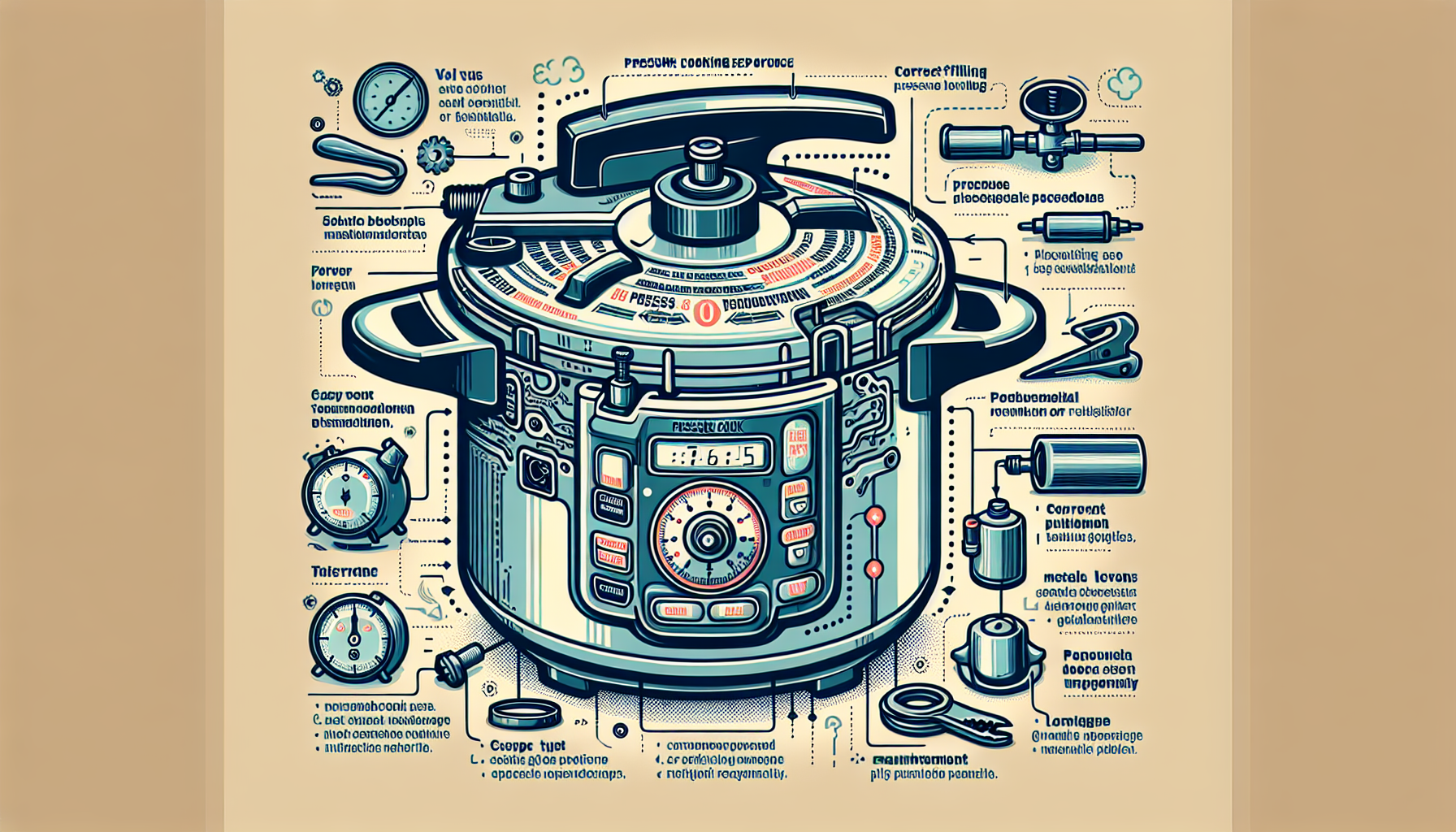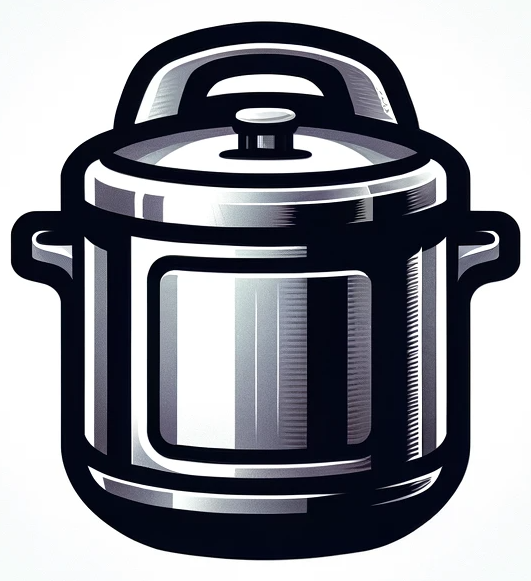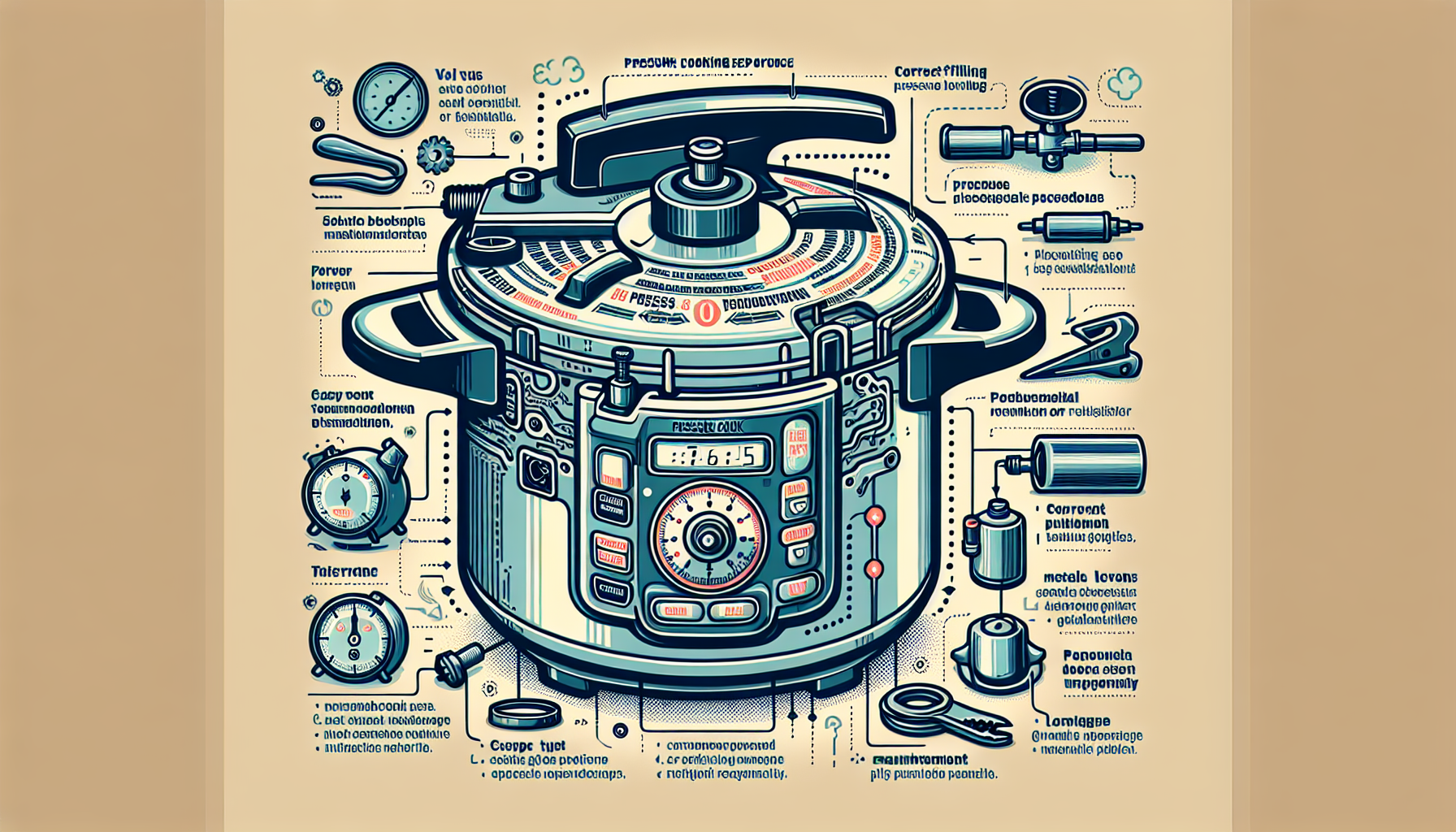Pressure cookers are a wonderful addition to any kitchen, allowing you to whip up delicious meals in a fraction of the time it would take using traditional cooking methods. However, like any kitchen appliance, pressure cookers are not without their potential issues. From leaky valves to malfunctioning seals, these problems can sometimes dampen the excitement of cooking with a pressure cooker. In this article, we will explore some of the common problems that can arise with pressure cookers and provide helpful tips on how to address them, ensuring that your cooking experiences remain stress-free and enjoyable. So, let’s dive into the world of pressure cooker troubleshooting!

CHECK OUT PRESSURE COOKERS ON AMAZON
Safety Concerns
Explosion risk
One of the main concerns with pressure cookers is the potential risk of explosion. This occurs when the pressure inside the cooker becomes too high and the safety features fail to release the excess pressure. The explosion can cause serious injuries to individuals nearby, as well as damage to nearby objects or surfaces. It is important to carefully follow the manufacturer’s instructions and use caution when operating a pressure cooker to minimize the risk of explosion.
Burns and scalds
Another safety concern when using a pressure cooker is the risk of burns and scalds. The high pressure and temperature inside the cooker can lead to steam or hot liquid being released forcefully if the lid is opened improperly. This can result in burns or scalds to the hands, arms, or face. It is crucial to always release the pressure in a safe and controlled manner, following the recommended procedure to avoid any accidental injuries.
Foodborne illnesses
Pressure cookers cook food at high temperatures, which can kill bacteria and other harmful pathogens. However, if the food is not cooked for a sufficient amount of time or at the correct temperature, there is a risk of foodborne illnesses. It is essential to ensure that food is cooked thoroughly, especially when cooking meat or poultry, to avoid any potential health risks. Following the recommended cooking times and temperatures provided by reliable sources is vital to minimize the risk of foodborne illnesses.
Sealing Issues
Difficulty in achieving proper seal
One common issue with pressure cookers is the difficulty in achieving a proper seal. A secure seal is crucial in maintaining the pressure inside the cooker during the cooking process. If the seal is not properly formed, the pressure cooker may not reach the desired pressure and temperature, resulting in undercooked food. It is important to ensure that the sealing ring is properly seated and free from any cracks or damage before using the pressure cooker.
Steam leakage
Another sealing issue that can occur is steam leakage. If there are any gaps or imperfections in the sealing ring or the lid, steam may escape during the cooking process. This can not only result in undercooked food but also affect the overall efficiency of the pressure cooker. Regularly inspecting and cleaning the sealing ring and lid can help prevent steam leakage and ensure optimal cooking performance.
Overcooking
Food becoming mushy
Overcooking is a common problem when using a pressure cooker, particularly when cooking vegetables or delicate ingredients. The high heat and pressure can cause foods to become mushy and lose their desired texture. It is important to carefully monitor cooking times and release the pressure at the appropriate moment to avoid overcooking and maintain the desired consistency of the food.
Loss of flavor and nutrients
Another concern with overcooking in pressure cookers is the potential loss of flavor and nutrients. The intense heat and pressure can break down the natural flavors of the ingredients and lead to a bland taste. Additionally, certain water-soluble vitamins and minerals can be lost during long cooking times. To retain the maximum nutritional value and flavor of the food, it is advisable to follow specific cooking guidelines and avoid extended cooking times, especially for vegetables and delicate foods.
Inconsistent Cooking
Uneven heat distribution
Pressure cookers can sometimes have issues with uneven heat distribution. This can result in certain areas of the food being undercooked while others are overcooked. Uneven heat distribution can be caused by various factors, such as incorrect positioning of the food, inadequate liquid content, or a malfunctioning pressure cooker. Properly arranging the ingredients and ensuring sufficient liquid is present can help minimize this problem and ensure consistent cooking results.
Uneven cooking of ingredients
Similar to uneven heat distribution, pressure cookers may also lead to uneven cooking of individual ingredients within a dish. Some ingredients may require longer cooking times than others, or certain foods may release more moisture during the cooking process, affecting the overall texture and taste. Careful selection and preparation of ingredients, as well as adjusting cooking times accordingly, can help achieve more consistent cooking results when using a pressure cooker.
Limited Cooking Capacity
Size constraints for large dishes
One limitation of pressure cookers is their size constraints when it comes to cooking larger dishes or quantities of food. The size of the pressure cooker may limit the amount of food that can be cooked at once, which can be challenging when preparing meals for larger groups or for batch cooking. It is important to consider the cooking capacity of the pressure cooker and plan accordingly to avoid overcrowding or overflowing.
Difficulty in cooking for large groups
In addition to size constraints, pressure cookers can pose challenges when cooking for large groups. The limited cooking space may require multiple batches or dividing the ingredients, which can be time-consuming and disrupt the overall cooking process. Proper meal planning and considering alternative cooking methods when preparing meals for large groups can help overcome this limitation and ensure efficient and timely cooking.
Complexity and Learning Curve
Overwhelming instructions
Pressure cookers often come with detailed instructions and various cooking settings, which can be overwhelming for beginners. The multitude of options and settings may lead to confusion, making it harder to understand how to use the pressure cooker effectively. However, with a little patience and practice, users can become familiar with the different functions and confidently operate the pressure cooker.
Time-consuming learning process
Learning how to use a pressure cooker efficiently can be time-consuming. It may take some trial and error to determine the appropriate cooking times and settings for different types of food. Additionally, understanding how to safely release the pressure and operate the pressure cooker correctly can require a learning curve. Consistency and perseverance in using the pressure cooker will ultimately result in gaining confidence and mastery of its operation.
Maintenance and Durability
Regular cleaning required
To ensure the longevity and performance of a pressure cooker, regular cleaning is necessary. Food residues and stains can build up over time, affecting the functionality and hygiene of the cooker. Cleaning the pressure cooker after each use, paying special attention to the sealing ring, the lid, and the vent valve, is important to prevent any blockages and maintain optimal performance.
Wear and tear over time
Like any kitchen appliance, pressure cookers are subject to wear and tear over time. The constant exposure to high temperatures and pressure can affect the integrity of the components, such as the sealing ring or the pressure release valve. It is important to regularly inspect the pressure cooker and replace any worn-out or damaged parts to ensure safe and efficient operation.
Energy Consumption
Reliance on electricity or gas
Pressure cookers primarily rely on electricity or gas as their energy source. This reliance on external energy can lead to increased energy consumption compared to other cooking methods. However, the time saved in cooking and the overall efficiency of pressure cookers can offset the higher energy costs. It is essential to compare and consider the energy consumption of a pressure cooker when deciding on its usage and calculating long-term costs.
Higher energy costs
As a result of their reliance on electricity or gas, pressure cookers may contribute to higher energy costs in households. The extended cooking times of traditional cooking methods are often reduced significantly when using a pressure cooker, resulting in less energy usage overall. However, the initial investment cost of the pressure cooker and any additional energy consumption should be taken into account when considering the long-term cost-effectiveness of using a pressure cooker.
CHECK OUT PRESSURE COOKERS ON AMAZON
Noise Production
Loud hissing or releasing of steam
During the operation of a pressure cooker, particularly when releasing pressure, loud hissing or the sound of steam being expelled may occur. While these sounds are normal and indicate the pressure is being released, they can be disruptive and noisy, especially in quieter environments. It is important to be aware of the noise produced by the pressure cooker and consider the surroundings when choosing to use it.
Disruptive noise during operation
Apart from the noise produced during pressure release, pressure cookers may emit continuous sounds while in operation. This noise can vary depending on the model and functionality of the pressure cooker. Although the noise may not be overly loud or bothersome for some individuals, it is worth considering the noise levels when using a pressure cooker, especially in open-plan kitchens or areas where background noise may be a concern.
Storage and Portability
Requirement for extra storage space
Pressure cookers can be bulky and require extra storage space in the kitchen. Considering their size and the need to store additional accessories and components, such as the sealing ring or the steam rack, finding adequate storage can be a challenge, particularly in smaller kitchens. It is important to plan for the necessary storage space when purchasing a pressure cooker to ensure it can be easily accessed and stored when not in use.
Difficulty in transporting
Due to their size and weight, pressure cookers can be challenging to transport, particularly if used in outdoor settings or when traveling. The need for a stable base, proper positioning of the lid, and ensuring all components are securely fastened can make transportation more complicated. For individuals who prioritize portability, there are smaller and more lightweight pressure cooker options available that can be more suitable for on-the-go use.
In conclusion, while pressure cookers offer numerous benefits and efficient cooking capabilities, it is essential to be aware of the potential problems they may present. Safety concerns, sealing issues, overcooking, inconsistent cooking, limited cooking capacity, complexity, maintenance and durability, energy consumption, noise production, and storage and portability are all aspects to consider when using a pressure cooker. By understanding and addressing these challenges, users can maximize the benefits of pressure cooking while minimizing any potential drawbacks. Remember to carefully read and follow the manufacturer’s instructions, practice proper safety precautions, and explore different recipes and cooking techniques to make the most out of your pressure cooker.

